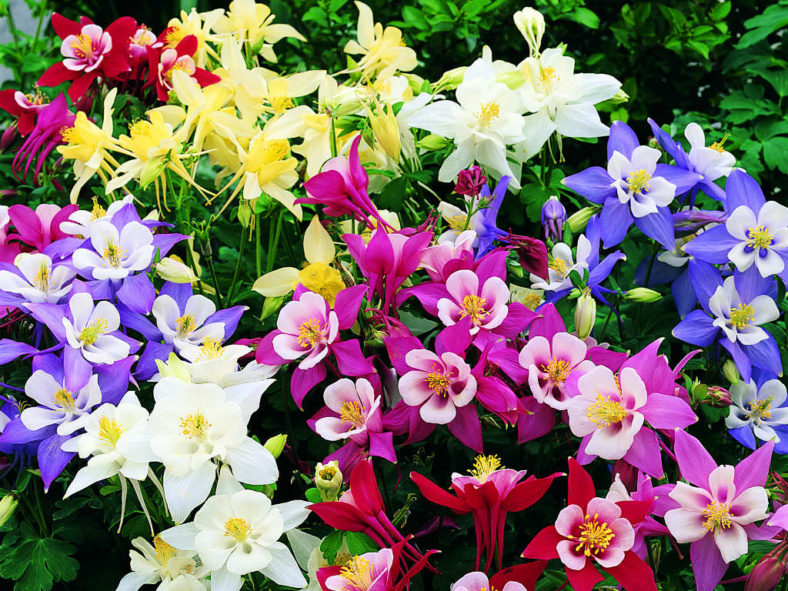The genus Aquilegia, also known as Columbine Plants, are easy-to-grow perennials that offer seasonal interest throughout much of the year. Aquilegia's bell-shaped flowers are popular with hummingbirds, bees, and gardeners. The mid-spring blooms fill the void between early spring bulbs and peak garden season. They are associated with woodland gardens, but most are widely adaptable. Many species are native to North America, from Canada to Texas in the United States.
Most varieties of Columbine will bloom for at least four weeks. They are tougher plants than they appear but tend to be short-lived perennials. However, they will seed and spread, remaining in your garden for years.
Columbine plants have an airy appearance, with small, rounded leaves and tall flower stalks that hold the blooms above the foliage. Flat fans of oval dark green leaves that turn red in the fall. Each dangling, bell-shaped flower has five petals that flare out from the base, surrounded by a collar of 5 larger sepals. The long, nectar-holding spurs arch backward out of the flowers.
Growing Conditions
Light: While they enjoy full sun in most areas, they don't like it very hot, especially during summer. Therefore, in warmer areas, grow them in partial shade.
Water: Keep the plants moist following columbine planting until well established. Then only weekly watering is necessary, except for extended periods of drought in which they will require additional watering.
Fertilizer: Provide a water-soluble fertilizer monthly. Regular fertilizing will help produce brighter blooms and thicker foliage.
Soil: Columbine plants aren't too particular about soil as long it's well-draining and not too dry.

Planting
You can start Columbine from seed or plant. Seeds can be direct sown throughout spring. The seeds need light to germinate, so simply press them on the soil surface and barely cover them with soil. Since Columbine is a perennial, it will take two years from planting seeds for them to bloom.
If you are starting your seeds indoors, they will do better with some pre-chilling. Place the seeds in the refrigerator in a plastic bag with some damp potting soil 8-12 weeks before your last frost date. Then pot them up and move them to a warmer spot.
Columbine Plants should be planted with their crown at the soil level. Water well and mulch. New plants will need to be kept moist until they become established. You'll know when they start putting out a lot of new growth. Even then, keep your Columbine well water during dry spells.
Pests and Diseases
Aphids, Caterpillars, and Leaf miners – Leaf miners are by far the biggest problem. They tunnel inside the leaves and can quickly make an unsightly mess. Shearing the plants after blooming will usually avoid the problem. Since Columbine doesn't usually rebloom, shearing is the best way to control insect problems. The leaves will eventually fill back in.
Grower's Tips
Columbine Plants can handle full sun. It's the combination of heat and dry soil they don't like, and mulching will help alleviate that. They will self-sow, but new plants can be lost if the summer gets too hot. Also, plants tend to be short-lived, fading out within three years. Hedge your bets and save some seeds to sow in the fall or falling spring.
Keep in mind that Columbine varieties readily cross-pollinate. Therefore, if you plant more than one variety, be prepared to see new colors and combinations.
If self-sowing becomes a nuisance, shear the plants back in mid-summer to prevent seed pods from forming.
Source: about.com
Links
- Back to genus Aquilegia
- Plantpedia: Browse flowering plants by Scientific Name, Common Name, Genus, Family, USDA Hardiness Zone, or Origin

